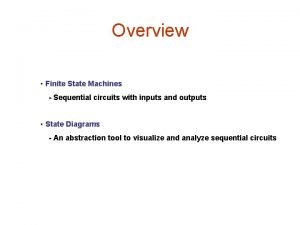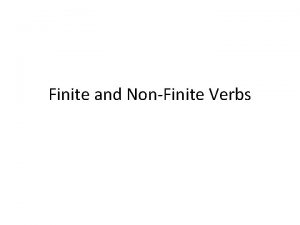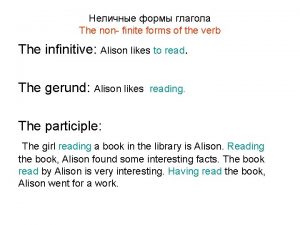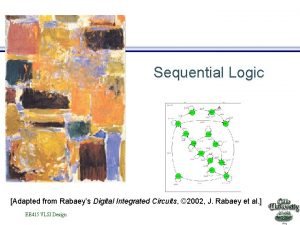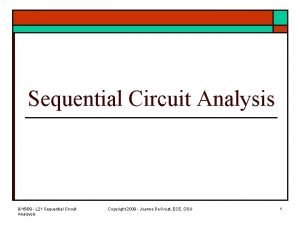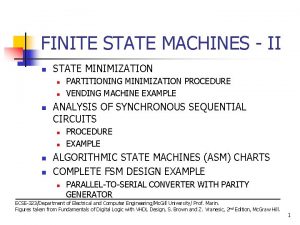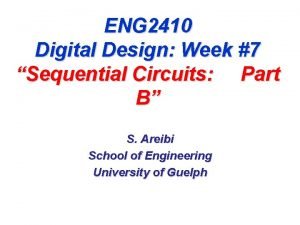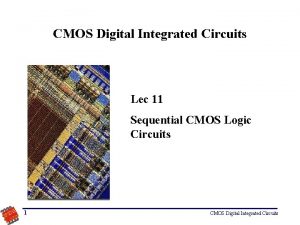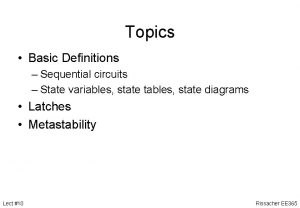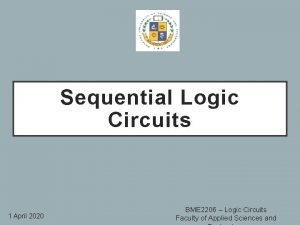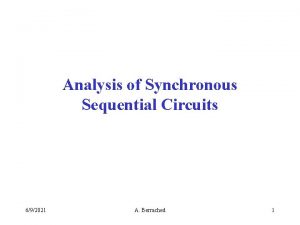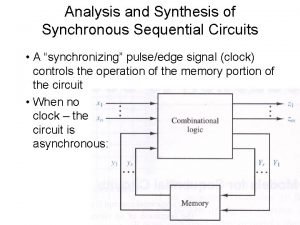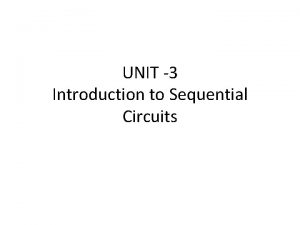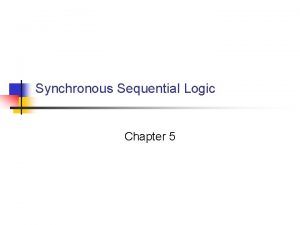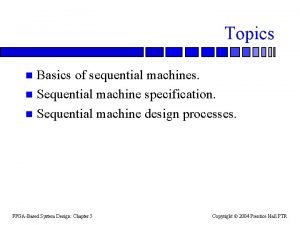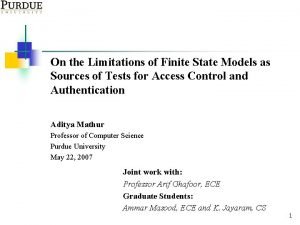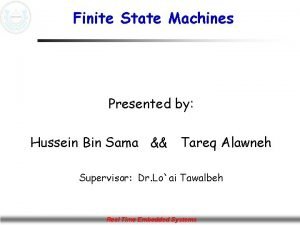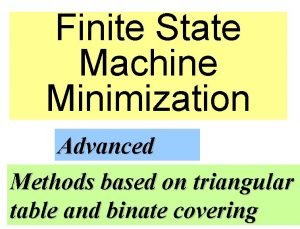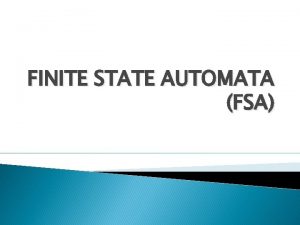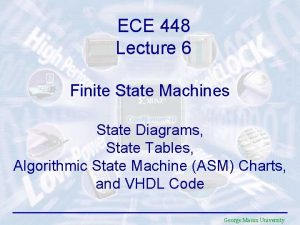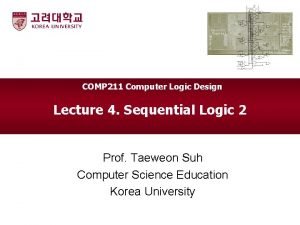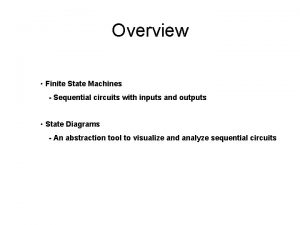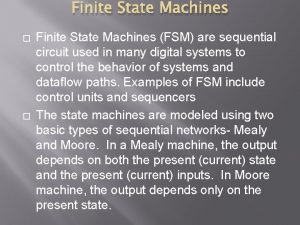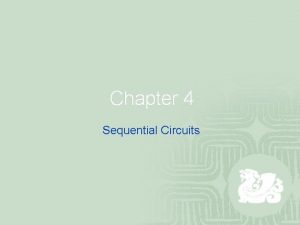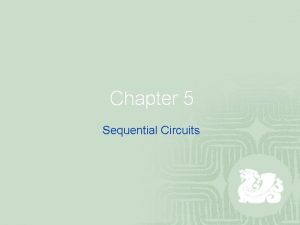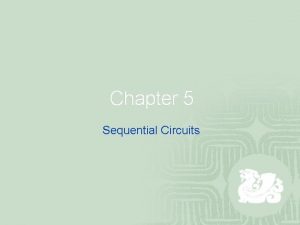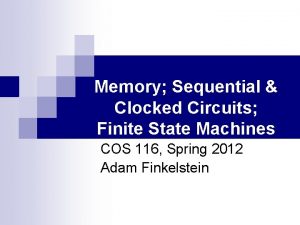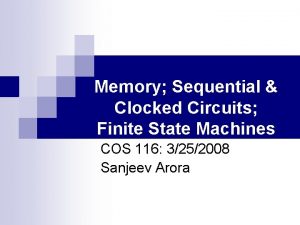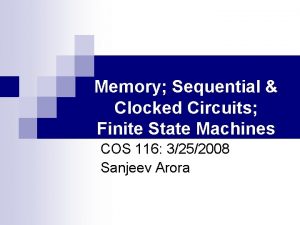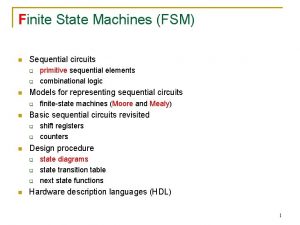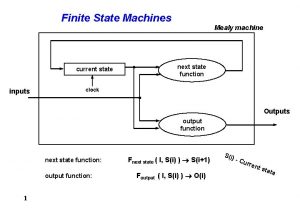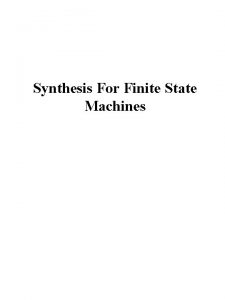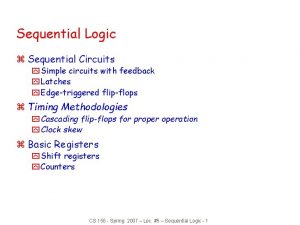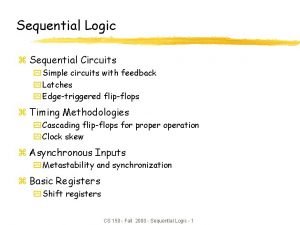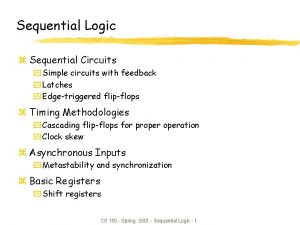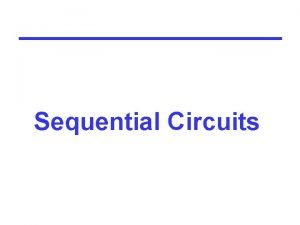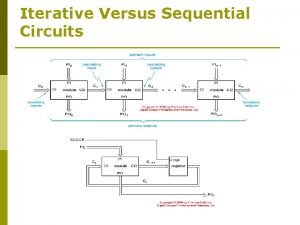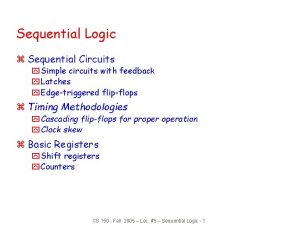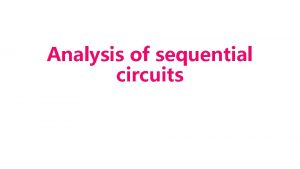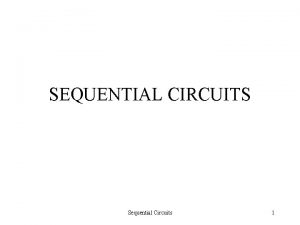Overview Finite State Machines Sequential circuits with inputs

























![Memory Design – 1 K x 4 A[09: 00] Addr Block Select D[03: 00] Memory Design – 1 K x 4 A[09: 00] Addr Block Select D[03: 00]](https://slidetodoc.com/presentation_image_h2/3389e77eb628761e3393fc8887d9e67b/image-26.jpg)
![Memory Design – 1 K x 8 D[07: 04] D[03: 00] A[09: 00] D[07: Memory Design – 1 K x 8 D[07: 04] D[03: 00] A[09: 00] D[07:](https://slidetodoc.com/presentation_image_h2/3389e77eb628761e3393fc8887d9e67b/image-27.jpg)
![Memory Design - 2 k x 8 D[07: 04] Block 01 Block 00 D[03: Memory Design - 2 k x 8 D[07: 04] Block 01 Block 00 D[03:](https://slidetodoc.com/presentation_image_h2/3389e77eb628761e3393fc8887d9e67b/image-28.jpg)
![Memory Design - 4 k x 8 D[07: 04] Block 11 Block 10 Block Memory Design - 4 k x 8 D[07: 04] Block 11 Block 10 Block](https://slidetodoc.com/presentation_image_h2/3389e77eb628761e3393fc8887d9e67b/image-29.jpg)
- Slides: 29

Overview • Finite State Machines - Sequential circuits with inputs and outputs • State Diagrams - An abstraction tool to visualize and analyze sequential circuits • Internal Memory - Random Access Memory (RAM) - Volatile – values lost on power loss - Static RAM (SRAM) - Dynamic RAM (DRAM) - Read Only Memory (ROM)

Combinational vs. Sequential Logic • There are two types of “combination” locks 25 4 1 8 4 Combinational: Success depends only on the values, not the order in which they are set. 20 30 15 Sequential: 5 10 Success depends on the sequence of values (e. g, R-13, L-22, R-3).

Combinational vs. Sequential Circuits • Combinational Circuit – always gives the same output for a given set of inputs • example: adder always generates sum and carry, regardless of previous inputs • Sequential Circuit – has memory - “stores” information, – output depends on stored information (state) plus input • so a given input might produce different outputs, depending on the stored information

State Machine • A type of sequential circuit – Combines combinational logic with storage – “Remembers” state, and changes output (and state) based on inputs and current state State Machine Inputs Combinational Logic Circuit Storage Elements Outputs

State • The state of a system is a snapshot of all the relevant elements of the system at the moment the snapshot is taken. • Examples: – The state of a basketball game can be represented by the scoreboard. (Number of points, time remaining, possession, etc. ) – The state of a tic-tac-toe game can be represented by the placement of X’s and O’s on the board.

State of Sequential Lock Our lock example has four different states, labelled A-D: A: The lock is not open, and no relevant operations have been performed. B: The lock is not open, and the user has completed the R-13 operation. C: The lock is not open, and the user has completed R-13, followed by L- 22. D: The lock is open.

Finite State Machine • A description of a system with the following components: 1. 2. 3. 4. 5. A finite number of states A finite number of external inputs A finite number of external outputs An explicit specification of all state transitions An explicit specification of what determines each external output value • Often described by a state diagram. - The set of all possible states. - Inputs that trigger state transitions. - Outputs associated with each state (or with each transition).

State Diagram • Shows states (e. g. A), actions (e. g. B) that cause a transition between states, and the outputs. Locked Open Locked

The Clock • Frequently, a clock circuit triggers transition from one state to the next. “ 1” “ 0” One Cycle time • At the beginning of each clock cycle, the state machine makes a transition, based on the current state and the external inputs (Synchronous). – Not always required. In lock example, the input itself triggers a transition (Asynchronous).

Implementing a Finite State Machine • Combinational logic – Determine outputs at each state. – Determine next state. • Storage elements – Maintain state representation. State Machine Inputs Clock Combinational Logic Circuit Storage Elements Outputs

Storage • Each D flipflop stores one state bit. • The number of storage elements (flipflops) needed is determined by the number of states (and the representation of each state). • Examples: – Sequential lock • Four states – two bits – Basketball scoreboard • 7 bits for each score digit, 5 bits for minutes, 6 bits for seconds, 1 bit for possession arrow, 1 bit for half, …

Complete Example – Traffic Sign • Design a “blinking” traffic sign which exhibits this behavior: State 1) No lights on State 2) 1 & 2 on State 3) 1, 2, 3, & 4 on State 4) 1, 2, 3, 4, & 5 on State 1) No lights on . . ( - Repeat as long as operate switch is turned on. - The system is in state 1 when the operate switch is off) 3 4 1 5 2 DANGER MOVE RIGHT

Traffic Sign State Diagram Switch off State bit S 1 State bit S 0 State Transitions occur on each clock cycle. Switch on Outputs

Traffic Sign Truth Tables Outputs (depend only on state: S 1 S 0) Next State: S 1’ S 0’ (depend on state and input) Switch Lights 1 and 2 Lights 3 and 4 Light 5 S 1 0 0 1 S 0 0 1 0 Z 0 1 1 Y 0 0 1 X 0 0 0 1 1 1 In S 1 0 X 1 0 S 0 X 0 1 S 1 0 0 1 S 0 0 1 1 0 1 0 1 1 Whenever In=0, next state is 00.

Traffic Sign Combinational Logic Edge Triggered D flipflops

Another Example of a State Machine Digital Computer “States”: 1. Fetch Instruction 1. Fetch Operand(s) 1. Execute Operation 1. Store Result 1. Check for Interrupt 2. Go to 1.

Computer Memory

Computer Memory Hierarchy

Main Memory • Address Space – The number of uniquely addressable memory locations • Addressability – The number of bits stored at an addressable location • Unit of Transfer – The number of bits transferred in a memory read or write {could be the “addressability” or a multiple of it, i. e. the addressability could be – an 8 bit byte, or – a 32 bit word (4 bytes) }

Basic Types of Memory Two basic kinds of RAM (Random Access Memory) • Static RAM (SRAM) – fast, maintains data as long as power applied • Dynamic RAM (DRAM) – slower but denser, bit storage decays – must be periodically refreshed. Refreshing interferes with regularity of execution of instruction stream. Also, non-volatile memories: ROM, PROM, flash, …

Memory Map 00 01 02 03. . FF 0000 0101 11001010 00011001. . 1100 What is the Address Space of this memory? What is the Word Length of this memory? What is the Unit of Transfer of this memory?

Memory Organization • What would a 1 word by 1 bit memory look like? – How could data be stored in it? – How could data be read from it? • What would a 1 word by 2 bit memory look like? – How could data be stored in it ? – How could data be read from it ? • What would a 2 word by 1 bit memory look like? – How could data be stored in it ? – How could data be read from it ?

22 x 3 Memory Organization address word select write enable address decoder output bits word WE input bits

22 x 3 Memory – 1 Decoder, 3 Multiplexors

22 x 3 Memory – Read of Word at Address 11
![Memory Design 1 K x 4 A09 00 Addr Block Select D03 00 Memory Design – 1 K x 4 A[09: 00] Addr Block Select D[03: 00]](https://slidetodoc.com/presentation_image_h2/3389e77eb628761e3393fc8887d9e67b/image-26.jpg)
Memory Design – 1 K x 4 A[09: 00] Addr Block Select D[03: 00]
![Memory Design 1 K x 8 D07 04 D03 00 A09 00 D07 Memory Design – 1 K x 8 D[07: 04] D[03: 00] A[09: 00] D[07:](https://slidetodoc.com/presentation_image_h2/3389e77eb628761e3393fc8887d9e67b/image-27.jpg)
Memory Design – 1 K x 8 D[07: 04] D[03: 00] A[09: 00] D[07: 04] Addr Block Select => D[03: 00] Addr Block Select =>
![Memory Design 2 k x 8 D07 04 Block 01 Block 00 D03 Memory Design - 2 k x 8 D[07: 04] Block 01 Block 00 D[03:](https://slidetodoc.com/presentation_image_h2/3389e77eb628761e3393fc8887d9e67b/image-28.jpg)
Memory Design - 2 k x 8 D[07: 04] Block 01 Block 00 D[03: 00]
![Memory Design 4 k x 8 D07 04 Block 11 Block 10 Block Memory Design - 4 k x 8 D[07: 04] Block 11 Block 10 Block](https://slidetodoc.com/presentation_image_h2/3389e77eb628761e3393fc8887d9e67b/image-29.jpg)
Memory Design - 4 k x 8 D[07: 04] Block 11 Block 10 Block 01 Block 00 D[03: 00]
 Finite state machine sequential circuits
Finite state machine sequential circuits Finite subordinate clause
Finite subordinate clause What is finite verb
What is finite verb Learning objectives of non finite verbs
Learning objectives of non finite verbs Finite and nonfinite verbs examples
Finite and nonfinite verbs examples Non finite forms of the verb qayda
Non finite forms of the verb qayda Non bistable sequential circuits
Non bistable sequential circuits Sequential circuit analysis
Sequential circuit analysis Synchronous sequential circuits examples
Synchronous sequential circuits examples Asm chart for vending machine
Asm chart for vending machine Analysis of sequential circuits
Analysis of sequential circuits Non bistable sequential circuits
Non bistable sequential circuits Sequential circuits prelude
Sequential circuits prelude Sequential circuits
Sequential circuits State diagram
State diagram Analysis of synchronous sequential circuits
Analysis of synchronous sequential circuits Analysis of synchronous sequential circuits
Analysis of synchronous sequential circuits Sequential
Sequential Mealy and moore machine
Mealy and moore machine Digital circuits
Digital circuits Advantages of parallel circuits over series circuits
Advantages of parallel circuits over series circuits Sequential machine
Sequential machine Tcp header segment
Tcp header segment Uts teori bahasa dan otomata
Uts teori bahasa dan otomata Limitations of finite state machine
Limitations of finite state machine Finite state machine with datapath
Finite state machine with datapath Finite state machine minimization
Finite state machine minimization Finite state automata (fsa) adalah
Finite state automata (fsa) adalah Vhdl finite state machine
Vhdl finite state machine Traffic light finite state machine
Traffic light finite state machine
